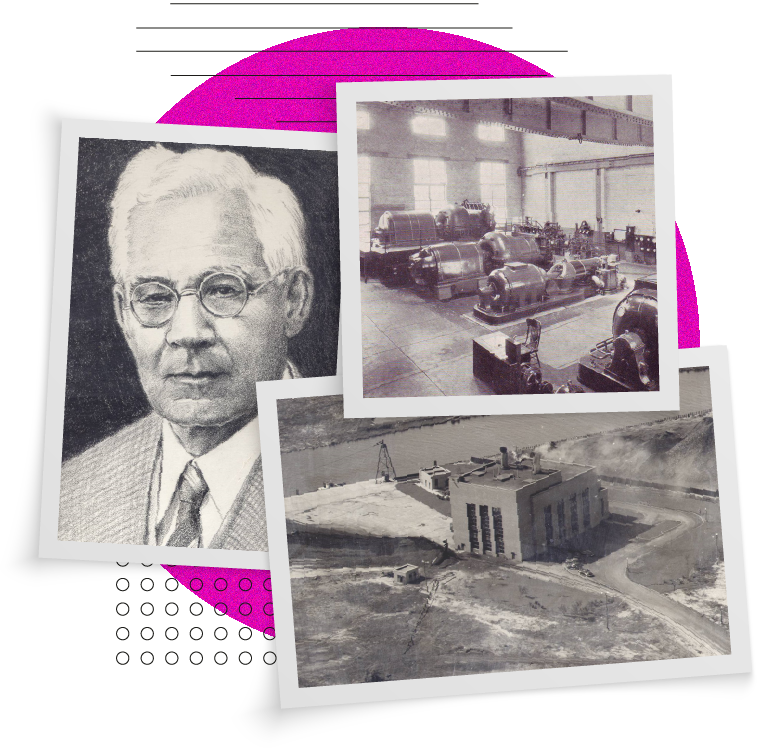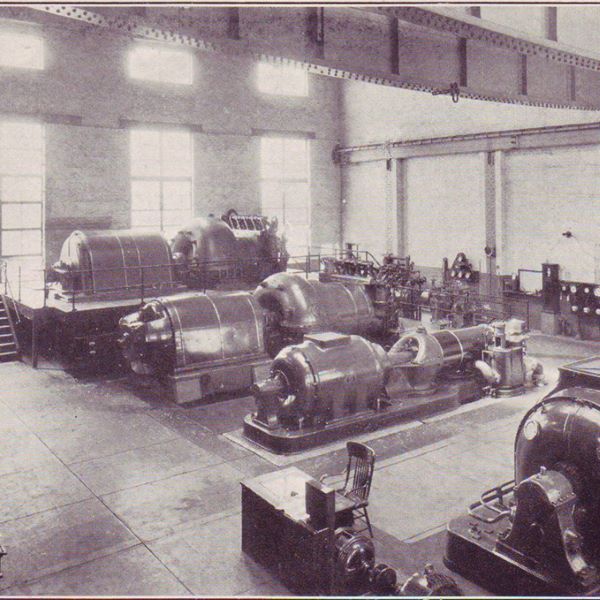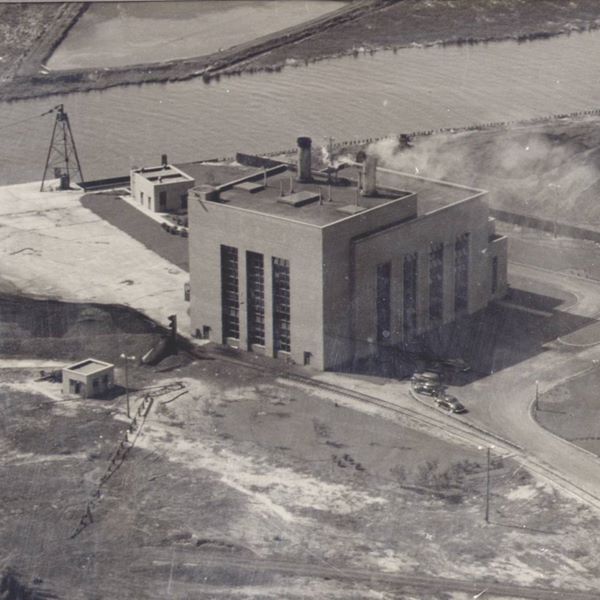James De Young Power Plant
A History
This year Holland BPW said a final farewell to the James De Young Power Plant (JDY). Serving the community through coal-fired power for 76 years, JDY fueled community and population growth for the City of Holland through reliable, affordable electricity.
The namesake of the former power plant and the first superintendent of Holland BPW, James De Young served as BPW Board Chair and City of Holland Mayor in addition to a career working in municipal electricity.
James De Young made a huge impact at Holland BPW during a pivotal time. It’s easiest to see his influence in a speech given in 1938, the year construction began on the coal-fired power plant that took his name:

“To no single person can credit be given for the conception and building of Holland’s splendid new electric generating station—it stands as a tribute to all the people of Holland, not as a memorial to any one individual.
However, both the city and its Board of Public Works would be remiss in their gratitude if honor were not paid to James De Young for his lifelong interest in guiding the city’s electric utility through its pioneering period and on to the success which has commanded the respect and admiration of utility experts the country over.
[Now] completing his 38th year of active participation in Holland’s public works, James De Young has enriched the city beyond measure. Not with a formal ceremony, but in the hearts of the people, Holland’s fine new generating station will be gratefully regarded as the James De Young Electric Power Plant.”

A Brief History of Our Power
While it may have been the most widely known generating facility in Holland, James De Young Power Plant was not the original electric generation source for Holland. When first established in 1893, Holland received its electricity from a power generating facility on 5th St, near where the Window on the Waterfront Park stands today.
To accommodate growing electrical needs and population growth in Holland, the James De Young Power Plant was built using New Deal government funds. Beginning construction in 1938, the power plant was completed in 1940 for $1.5 million, an equivalent of $33 million today.
Starting with two generation units (labeled Unit 1 and Unit 2, respectively), James De Young Power Plant saw 3 expansions over its lifetime. At its opening, JDY had two 7.5 MW units, originally twice what was needed at the time. Three additional generation units were added to the plant in 1953, 1961, and 1968, respectively, as electricity needs in the community continued to grow.
A 20 MW fuel oil-fired peaking unit on Sixth Street was added in 1974, capable of 20 MW of generation. That peaking unit was also retired this year as part of the JDY demolition project. Its removal makes room for the City’s future expansion of the Window on the Waterfront ice skating park.
The most recent additions to Holland’s local generation portfolio were the 48th St peaking station and our combined cycle natural gas power plant, Holland Energy Park. The 48th St peaking station has 161 MW of installed capacity provided by three combustion turbines added between 1992 and 2000. Designed to replace JDY’s coal-fire generation, Holland Energy Park has an installed capacity of 145 MW, about double the generation capacity of JDY at its height.
A Growing City
To understand the enormity of electricity’s effect on Holland, it’s easiest to see the community impact through the increase in population and electricity use over the decades.
In 1900 for the entire city of Holland (population, 7,790) Holland BPW had only 310 electric customers. That year, the Holland BPW provided power for 4,956 incandescent lamps connected to the distribution system.
By 1920, the population had increased to 12,500, with ten times the number of electric customers at 3,203. That year, the most common electric appliances connected were clothes irons (of which there were 2,383 connected), followed by washing machines, vacuum cleaners, and fans. At the time, only 13 cooking ranges were connected to electricity.

When JDY was completed in 1940, the population reached 19,150, with 6,158 electric customers connected. That year electric range installations increased to 1,962 ranges connected to Holland BPW power.
Today Holland BPW has over 30,000 electric customers in the City of Holland plus parts of the the surrounding townships. Considering just the City of Holland, the estimated population is 34,000. In addition to many thriving businesses, our community has continued to innovate through projects like the combined-cycled natural gas power plant of Holland Energy Park, a snowmelt system for downtown Holland visitors and residents, and community investment in fiber infrastructure for the City of Holland.
A Final Farewell
This August, Holland BPW and the community watched as the James De Young Power Plant came down in a controlled implosion. After months of pre-work to ensure the safe disposal of potentially hazardous materials, a professional team utilized over 40 perfectly timed charges to bring the final pieces of the plant safely to the ground.
From 1939 to 2016 when it burned its final coal, the James De Young Power Plant provided reliable, local power to the greater Holland community. Holland BPW is grateful to continue the legacy of JDY through Holland Energy Park, as we continue to serve the greater Holland community efficiently and affordably.
While Holland BPW’s founders may not have predicted the prolific uses of electricity, they would be proud to know that over the course of 130 years, Holland BPW has continued to provide affordable, reliable electricity to spur innovation and growth.
Next Article: Electric Lawn Tool Field Day 〉
